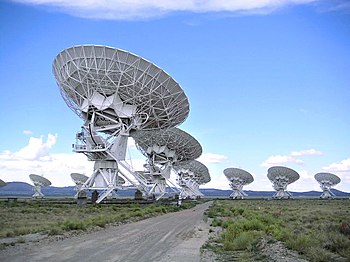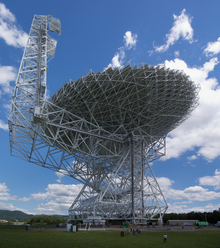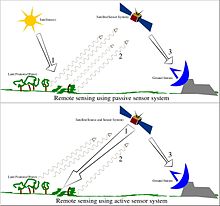History of radio § Broadcasting
Scientific research
Radio astronomy is a subfield
of astronomy that studies celestial objects at radio frequencies. The
first detection of radio waves from an astronomical object was in 1932, when
Karl Jansky at Bell Telephone Laboratories observed radiation coming from
the Milky Way. Subsequent observations have identified a number of
different sources of radio emission. These include stars and galaxies, as
well as entirely new classes of objects, such as radio galaxies, quasars,
pulsars and masers.The discovery of the cosmic microwave background
radiation, regarded as evidence for the Big Bang theory, was made through
radio astronomy.
Radio astronomy is conducted using large radio antennas referred
to as radio telescope, that are either used singularly, or with multiple
linked telescopes utilizing the techniques of radio interferometry and
aperture synthesis. The use of interferometry allows radio astronomy to achieve
high angular resolution, as the resolving power of an interferometer is set by
the distance between its components, rather than the size of its components.
Remote sensing is the acquisition of
information about an object or phenomenon without making physical contact with
the object and thus in contrast to on-site observation, especially the Earth.
Remote sensing is used in numerous fields, including geography, land surveying
and most Earth Science disciplines (for example, hydrology, ecology, meteorology,
oceanography, glaciology, geology); it also has military, intelligence,
commercial, economic, planning, and humanitarian applications.
In
current usage, the term "remote sensing" generally refers to the use
of satellite- or aircraft-based sensor technologies to detect and classify
objects on Earth, including on the surface and in the atmosphere and oceans,
based on propagated signals (e.g. electromagnetic radiation). It may
be split into "active" remote sensing (such as when a signal is
emitted by a satellite or aircraft and its reflection by the object is detected
by the sensor) and "passive" remote sensing (such as when the
reflection of sunlight is detected by the sensor).






Comments
Post a Comment